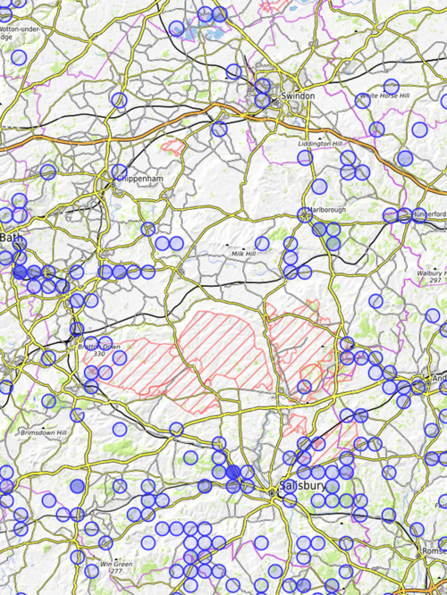Guest blog written by Robin Scagell, UK Glow Worm Survey, June 2022
Everyone has heard of glow worms but most have never seen one. They are actually quite widespread and many people would be surprised to find that they could probably see them quite close to their homes, if they knew where to look. Glow worms favour poor soils, so they are common in chalky areas, but there are calcareous parts of Wiltshire where they seem to be absent. Is this a genuine lack or just because of under-reporting? We’d like to know.
They are also found in glades in ancient woodland so I was surprised to notice a few years ago that there had never been any reports of them from Savernake Forest. Accordingly a search party set out and found them along some of the rides. Quite possibly there are many more. As the distribution map shows, there are large parts of Salisbury Plain, even away from the obvious MoD areas, where we’d expect to see them, yet there are few reports.



